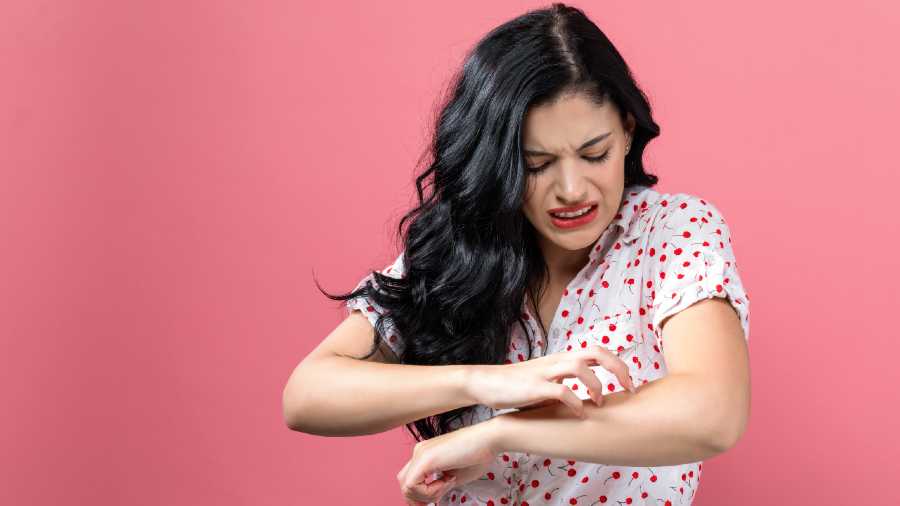Atopic dermatitis, or eczema, affects 25 per cent of the children in India. Many develop it in infancy or early childhood. Red and itchy discoloured areas may develop on the cheeks, the inner aspect of the elbows, the inner part of the knees and even on the scalp. In the nappy area, it is more likely to be a diaper rash. The affected areas may ooze and become encrusted. The infant may try to rub the affected area on the mattress, become irritable, cry and sleep poorly.
Three per cent of older children and adults can also develop eczema — they may or may not have had it in childhood. Eczema can appear suddenly at an older age. It may develop near the eyes and on the palms and soles of the feet also. The skin of that area can thicken and become discoloured. Secondary infection may occur as a result of scratching. The lesions themselves may ooze and develop encrustations.
Eczema tends to run in families. This is because the outer layer of the skin in these families has gaps, so excess moisture is lost from the skin, making it dry and itchy. The same gene also causes asthma and allergic sneezing or hay fever by causing an overreaction by the immune system to pollen and dust.
Some people develop a type of eczema called neurodermatitis. In such cases, they tend to keep scratching a particular area. The skin there becomes discoloured, thickened and hyperpigmented, and may also get secondarily affected. Varicose veins can cause stasis, eventually making the skin eczematous too.
In both these cases, “the more you scratch, the more you itch”. The condition is worsened by scratching.
Myths abound on the origin and management of eczema. Under the mistaken belief that it is precipitated by food, well-meaning parents end up restricting more and more items from the diet of their children. Food restrictions do not really work.
On the contrary, removing milk, eggs and nuts from the diet can interfere with proper growth and development. Children need those nutrients to grow and develop properly.
Bathing frequently also does not reduce or worsen eczema, provided the skin is moisturised after a bath.
Children usually outgrow their eczema but, in some cases, it may persist into adult life.
There are no diagnostic tests for eczema. The history and the appearance of the lesions provide clues for the diagnosis. If allergies to a specific substance are suspected, patch testing can be done. A flare-up around the allergen is usually seen within 24 hours. The tests are not always conclusive.
Atopic dermatitis can be controlled, it cannot be cured. The key is to maintain moist skin and not scratch.
Mix 250ml of coconut oil, 250ml sesame oil and 100ml castor oil. Apply a portion of the mixture 15 minutes before bath.
Add 30ml coconut oil and a teaspoon of soda bicarbonate to the bathwater, which should be tepid, not hot.
Use a mild, non-perfumed glycerine-based soap for bathing.
Moisturise the skin immediately after bath with 100ml liquid paraffin. This will not stain the clothes.
Using an earbud, apply a mild steroid cream (1 per cent strength) before going to bed.
Take a mild antihistamine at night to reduce the itching as well as to promote sleep, say 5 milligrams of levocetirizine.
If it is due to varicose veins, in addition, wear special stockings all day and sleep with the feet elevated.
Usually, this is all that is needed in mild cases. But if the eczema is secondarily infected, antibiotics may have to be prescribed. A short course of oral steroids may be required to deal with severe flare-ups.
The writer is a paediatrician with a family practice at Vellore and the author of Staying Healthy in Modern India. If you have any questions on health issues, please write to yourhealthgm@yahoo.co.in










